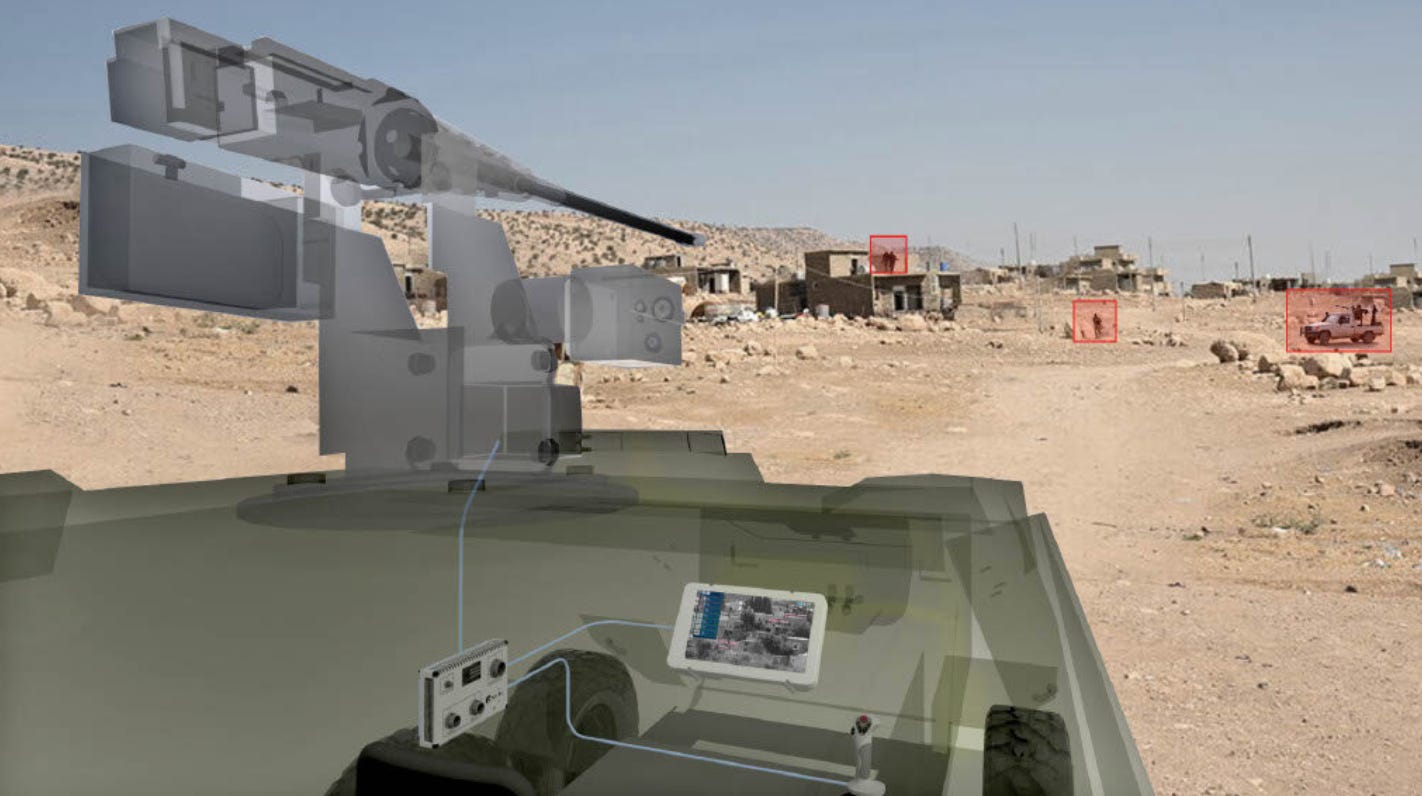- Yaro on AI and Tech Trends
- Posts
- ⚠️Is Gaza a Real-Time Testing Ground for Military AI?
⚠️Is Gaza a Real-Time Testing Ground for Military AI?
Plus: The Autonomous Vehicles Acceleration.
Get in Front of 50k Tech Leaders: Grow With Us
Happy Friday! Today’s issue dives into the booming autonomous vehicle industry, fueled by loosened regulations and rapid AI progress. We also explore how Gaza is becoming a controversial testing ground for AI warfare, without regard to human lives. Plus, we’re launching a new “AI Wins” section to highlight real-world breakthroughs and lessons. Enjoy the read — we’re excited to hear your thoughts!
Adobe Adds “No AI” Tag for Human-Made Art.
🧰 AI Tools - AI Agent Building.
🧠 Learning Corner - Books & Reading Materials.
Is Gaza a Real-Time Testing Ground for Military AI?
📰 News and Trends.
🏆Real AI Wins
Today’s Fastest Growing Company Might Surprise You
🚨 No, it's not the publicly traded tech giant you might expect… Meet $MODE, the disruptor turning phones into potential income generators.
Mode saw 32,481% revenue growth, ranking them the #1 software company on Deloitte’s 2023 fastest-growing companies list.
📲 They’re pioneering "Privatized Universal Basic Income" powered by technology — not government, and their EarnPhone has already helped consumers earn over $325M!
Invest in their pre-IPO offering before their share price changes on May 1st.
*An intent to IPO is no guarantee that an actual IPO will occur. Please read the offering circular and related risks at invest.modemobile.com.
*The Deloitte rankings are based on submitted applications and public company database research.
Adobe Adds “No AI” Tag for Human-Made Art.

We live in an era where we do not know what is real and what is computer-generated. In Australia, an AI-generated radio host in Australia went unnoticed for months, even while having an avatar and page on the radio station. It took a bit of digging to realize that this DJ did not exist anywhere on the internet, which is strange nowadays.
Adobe seems to be taking matters into its own hands and now lets artists label their work as “created without generative AI” in its Fresco app. The tag uses Content Credentials metadata to certify work as AI-free—a response to growing concern over AI’s role in creative fields. While Adobe expands AI tools like Firefly and integrates models from OpenAI and Google, it aims to support all creators by offering clear labeling and choice.
🧠 Learning Corner.
Books & Reading Materials.
Probabilistic Machine Learning by Kevin Murphy - A comprehensive two-volume set covering modern machine learning techniques.
Dive into Deep Learning - An interactive book with embedded code, focusing on deep learning applications.
The Batch by Andrew Ng - A weekly newsletter summarizing the latest developments in AI.
Is Gaza a Real-Time Testing Ground for Military AI?

Axon Vision is used in Gaza.
Israel has turned the Gaza war into one of the world’s first large-scale testbeds for military artificial intelligence — deploying unproven tools in live combat, often with fatal consequences. Reports from Israeli and U.S. defense officials confirm a surge in battlefield AI experimentation, raising ethical and humanitarian concerns globally.
Since the October 7, 2023 attacks by Hamas, Israel’s elite cyber intelligence unit, Unit 8200, has rapidly deployed experimental AI technologies, including tools that had never before been used in war. These include:
Audio geolocation AI: Used to help locate Hamas commander Ibrahim Biari, who was killed in an airstrike — alongside 125 civilians.
“Lavender” AI: A machine learning algorithm trained on Hamas data to predict militant affiliation and select airstrike targets.
Facial recognition systems: Installed at Gaza checkpoints to flag suspects — but resulted in misidentifications and wrongful arrests.
An Arabic-language chatbot and large language model (LLM): Capable of analyzing regional dialects and Arabic social media chatter to assess public sentiment and inform strategy.
These tools were developed in part through collaboration between Israeli reservists and engineers from Google, Meta, and Microsoft, working out of a Unit 8200 innovation hub known as "The Studio."
The U.S. is not deploying AI directly in Gaza, but it shares intelligence with Israel, co-funds defense projects, and is monitoring these developments closely. Israeli companies like XTEND, which supply AI-enhanced drones, also work with the U.S. Department of Defense, blurring the line between allies and shared military experimentation.
Israel has long used conflict zones as tech incubators — from the Iron Dome to cyber weapons. But this AI surge represents a new level of immediacy and scale. And while military leaders tout these advancements as “game-changers,” researchers and ethicists stress the need for clear boundaries and human oversight.
📰 AI News and Trends
The Government orders Ed Dept to make AI a national priority while plotting the agency’s death.
X is evolving from a social media platform powered by advertisers to one betting on revenue generated from AI and subscriptions.
Perplexity CEO says its browser will track everything users do online to sell ‘hyper-personalized’ ads, and with Motorola, Announce App Distribution Deal.
More than 1/3 of all code at Google is now generated by AI.
Benchmark, the U.S. venture capital firm known for early investments in Uber and Snap, has led a funding round for the Chinese startup that operates Manus.
Spotify’s AI playlist feature rolls out to the US and more markets
🌐 Other Tech news
Aurora Innovation plans to unleash driverless trucks on a 200-mile stretch of Interstate 45 between Dallas and Houston by the end of the month.
Waymo reports 250,000 paid robotaxi rides per week in the U.S.
Volkswagen said that it will start supplying robotaxi rides for Uber in multiple U.S. cities starting in Los Angeles next year.
Tesla is testing its robotaxi service with employees in Austin and San Francisco.
Apple Aims to Make All U.S.-Sold iPhones in India by 2026.
This week, China quietly dropped its retaliatory 125% tariffs on certain semiconductors imported from the U.S.
The Autonomous Vehicles Acceleration.
The autonomous vehicle (AV) industry is experiencing rapid growth, propelled by recent regulatory changes and significant advancements from key players. The U.S. Department of Transportation has introduced a new framework that relaxes certain safety regulations for AVs to foster innovation and help U.S. companies compete globally, but it may also lead to more casualties and accidents.
Reduced Crash Reporting: Automakers are now required to report fewer details about incidents involving self-driving and advanced driver-assistance systems.
Testing Flexibility: The framework allows for broader testing of vehicles that don't meet all federal safety standards, such as those without steering wheels or brake pedals.
Major Players Expand Operations

Tesla, Aurora, VW, and Waymo are quickly expanding.
Tesla has initiated employee testing of its Full Self-Driving (FSD) supervised ride-hailing service in Austin and the San Francisco Bay Area, completing over 1,500 trips and 15,000 miles. A public launch in Austin is planned for June, with the introduction of the Cybercab, a purpose-built autonomous vehicle, expected next year.
Waymo, Alphabet's AV unit, reports providing over 250,000 paid robotaxi rides per week across cities like San Francisco, Los Angeles, Phoenix, and Austin. The company is exploring partnerships to scale operations and is considering offering robotaxis for personal ownership in the future.
Volkswagen and Uber have announced a strategic partnership to deploy thousands of autonomous ID. Buzz vehicles on the Uber platform, starting in Los Angeles in 2026. Testing is expected to begin later this year.
Aurora Innovation plans to launch fully autonomous trucks on a 200-mile stretch of Interstate 45 between Dallas and Houston by the end of the month, marking a significant step in commercial driverless freight operations.
As the industry evolves, balancing innovation with public trust will be crucial.
🧰 AI Tools
AI Agent Building Apps.
N8N - Build with the precision of code or the speed of drag-n-drop. Host with on-prem control or in the cloud. A multi-step AI agent that integrates apps than any other tool.
Node-RED - An open-source, flow-based development tool originally developed by IBM, designed for wiring together hardware devices, APIs, and online services. Ideal for Internet of Things (IoT) applications, real-time data processing, and integrating diverse APIs. citeturn0search0
Activepieces - An open-source, no-code automation platform that enables users to automate tasks across various applications. Suitable for automating business processes, marketing workflows, and integrating SaaS applications.
StackStorm - An open-source event-driven automation platform that focuses on runbook automation for DevOps and IT operations. Best suited for infrastructure automation, continuous integration/continuous deployment (CI/CD) pipelines, and incident response automation.
Camunda - An open-source process orchestration platform that allows users to model and automate business processes using BPMN (Business Process Model and Notation). Ideal for enterprises requiring complex process automation, human task management, and decision automation.
Download our list of 1000+ Tools for free.
🏆Real AI Wins
ClassPass, an American company operating a subscription platform for fitness, improved its AI chatbots after poor early performance by auditing 10% of chats and training on low-rated ones and on specific policies where it struggled, while continuously refining responses based on human agent feedback. ClassPass is using software from Decagon, a two-year-old startup. Now handling 2.5 M+ chats, its AI matches human satisfaction scores and cuts support costs by 95%, with fewer than half of the cases needing human help.
One problem AI can’t solve? Some customers just don’t want to talk to a bot.


Reply